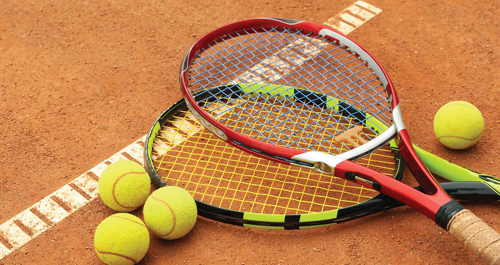Rise by Six: Your Daily Dose of Inspiration
Explore insights and stories that elevate your day.
Tennis Racket Realities: Why Your Gear Might Be Holding You Back
Unlock your true potential on the court! Discover how your tennis racket might be the hidden obstacle in your game.
The Hidden Impact of Racket Weight: Are You Using the Right Balance?
The weight of your racket plays a crucial role in both performance and injury prevention, yet it's often overlooked by players at all levels. A racket that is too heavy can lead to fatigue and strain, whereas one that is too light may result in insufficient power or control. Finding the right balance in racket weight is essential for maximizing your game efficiency and enjoyment. Many players fail to consider how different weight distributions affect their swings; for instance, a head-heavy racket can provide more power but sacrifices maneuverability, while a head-light racket allows for quicker adjustments but may require more strength to generate power.
Understanding your own playing style and physical capabilities is key to selecting the right racket weight. Be sure to assess factors such as your strength, swing speed, and game strategies, as these will greatly influence your choice. Additionally, it is advisable to test various rackets at different weights to see which one feels most comfortable and enhances your performance. Ultimately, the hidden impact of racket weight can make a significant difference in your overall gameplay, turning your strengths into triumphs while avoiding potential injuries.

String Tension and You: How to Optimize Your Setup for Better Performance
String tension plays a crucial role in the performance of your racquet, influencing everything from power to control. When you choose the right tension, you're essentially customizing your setup to suit your playing style. Higher tension typically results in more control and spin, while lower tension can provide more power and a softer feel. To find your optimal string tension, start by experimenting with various tensions within the recommended range for your racquet, and pay attention to how each adjustment affects your game.
In addition to experimenting with different tensions, consider these factors to further optimize your setup:
- String Type: Different materials and constructions can significantly impact performance.
- Racquet Frame: The stiffness and design of your racquet frame can alter how tension affects your shots.
- Playing Style: Aggressive players might prefer tighter tension for added control, while recreational players might benefit from a looser setup for enhanced comfort.
Is Your Racket Design Sabotaging Your Game? Common Misconceptions Decoded
When it comes to improving your game, many players overlook a crucial factor: racket design. Common misconceptions suggest that simply upgrading to the latest model or choosing a racket based solely on aesthetic appeal will elevate your performance. In reality, a racket's frame composition, weight distribution, and head size play a significant role in how it interacts with your playing style. For instance, a heavier racket may provide more stability and power, but it can also lead to fatigue if not suited to your strength level. Moreover, understanding your own playing style—be it aggressive baseline play or net dominance—can help you choose a racket that complements your strengths and mitigates your weaknesses.
Another common myth is that there is no significant difference between beginner and advanced racket designs. While it’s true that many rackets are marketed broadly, specific designs cater to different skill levels. Beginner rackets often emphasize a larger sweet spot and lighter weight for easier handling, while advanced options may prioritize control and precision, catering to seasoned players who can handle the nuances of a more demanding frame. As you refine your skills, reconsidering your racket design could be the key to unlocking your full potential on the court, ensuring that you’re not inadvertently sabotaging your game with an ill-fitting racket.